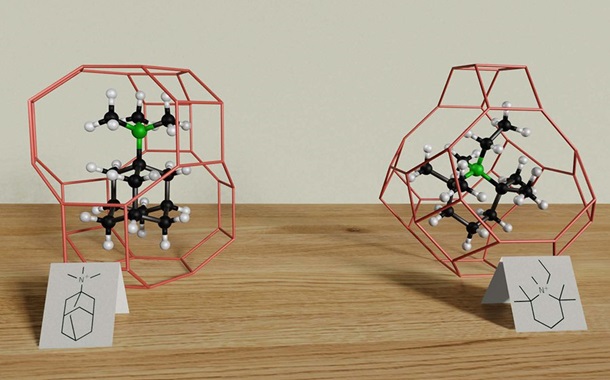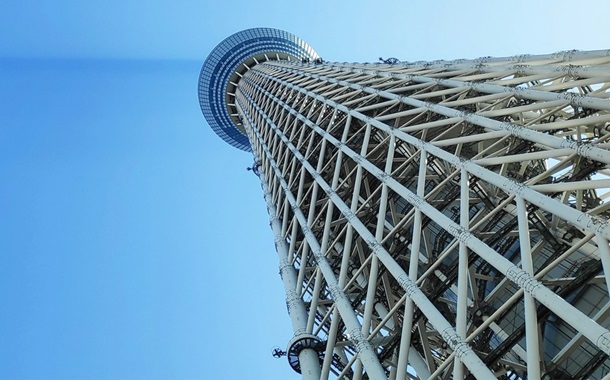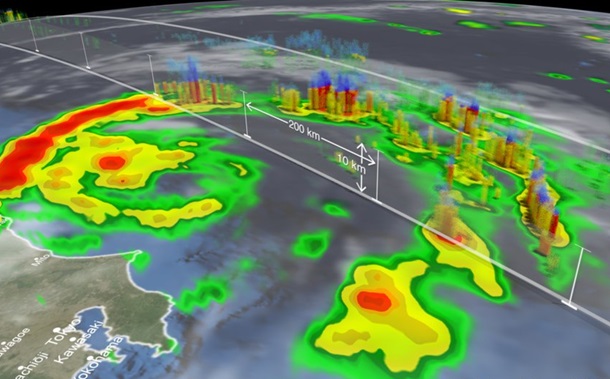Study of Effect of Size on Iron Nanoparticle by Molecular Dynamics Simulation
Downloads
We use molecular dynamics simulation to study iron Nanoparticles (NPs) consisting of 4000, 5000, and 6000 atoms at temperatures of 300 and 900 K. The crystallization and microstructure were analyzed through the pair radial distribution function (PRDF), the potential energy per atom, the distribution of atom types and dynamical local structure parameters <fx>, where x is the bcc, ico or 14. The simulation indicated that amorphous NP contains a large number of ico-type atoms that play a role in preventing crystallization. Amorphous NP is crystallized through transformations of f14 > 0 and fbcc = 0 type to bcc-type atoms when it is annealed at 900 K upon 40 ns. The growth of crystal clusters happens in parallel with the changing of their microstructure. The behavior of the crystal cluster resembles the nucleation process described by classical nucleation theory. Furthermore, we found that the amorphous NP has two parts: the core has a structure similar to that of amorphous bulk, while the surface structure is more porous and amorphous. Unlike amorphous NP, crystalline NP also has three parts: the core is the bcc, the next part is the distorted bcc and the surface is amorphous. Amorphous and crystalline NPs have part of a core which has a structure that does not depend on size.
Doi:10.28991/HIJ-2021-02-03-01
Full Text:PDF
Downloads
Gharibshahian, E. (2020). The Effect of Polyvinyl Alcohol Concentration on the Growth Kinetics of KTiOPO4 Nanoparticles Synthesized by the Co-precipitation Method. HighTech and Innovation Journal, 1(4), 187–193. doi:10.28991/hij-2020-01-04-06.
Liu, Y., RamaRao, N., Miller, T., Hadjipanayis, G., & Teplyakov, A. V. (2013). Controlling Physical Properties of Iron Nanoparticles during Assembly by "Click Chemistry.” The Journal of Physical Chemistry C, 117(39), 19974–19983. doi:10.1021/jp406021z.
Kien, P. H., Lan, M. T., Dung, N. T., & Hung, P. K. (2014). Annealing study of amorphous bulk and nanoparticle iron using molecular dynamics simulation. International Journal of Modern Physics B, 28(23), 1450155. doi:10.1142/s0217979214501550.
Madras, G., & McCoy, B. J. (2007). Kinetic Model for Transformation from Nanosized Amorphous TiO2to Anatase. Crystal Growth & Design, 7(2), 250–253. doi:10.1021/cg060272z.
Epifani, M., Pellicer, E., Arbiol, J., Sergent, N., Pagnier, T., & Morante, J. R. (2008). Capping Ligand Effects on the Amorphous-to-Crystalline Transition of CdSe Nanoparticles. Langmuir, 24(19), 11182–11188. doi:10.1021/la801859z.
Li, X., & Huang, J. (2003). Molecular dynamics studies of the kinetics of phase changes in clusters III: structures, properties, and crystal nucleation of iron nanoparticle Fe331. Journal of Solid State Chemistry, 176(1), 234–242. doi:10.1016/s0022-4596(03)00414-6.
Delhommelle, J. (2011). Crystal nucleation and growth from supercooled melts. Molecular Simulation, 37(7), 613–620. doi:10.1080/08927022.2011.566611.
Han, J., Wang, C., Liu, X., Wang, Y., Liu, Z.-K., & Jiang, J. (2015). Atomic-Level Mechanisms of Nucleation of Pure Liquid Metals during Rapid Cooling. ChemPhysChem, 16(18), 3916–3927. doi:10.1002/cphc.201500699.
Shibuta, Y., Oguchi, K., Takaki, T., & Ohno, M. (2015). Homogeneous nucleation and microstructure evolution in million-atom molecular dynamics simulation. Scientific Reports, 5(1). doi:10.1038/srep13534.
Kelton, K. F. (2013). Crystal nucleation in supercooled liquid metals. International Journal of Microgravity Science and Application, 30(1), 11-18. doi:10.15011/jasma.30.1.11.
Han, J., Wang, C., Liu, X., Wang, Y., Liu, Z.-K., & Jiang, J. (2015). Atomic-Level Mechanisms of Nucleation of Pure Liquid Metals during Rapid Cooling. ChemPhysChem, 16(18), 3916–3927. doi:10.1002/cphc.201500699.
Tian, Z. A., Liu, R. S., Dong, K. J., & Yu, A. B. (2011). A new method for analyzing the local structures of disordered systems. EPL (Europhysics Letters), 96(3), 36001. doi:10.1209/0295-5075/96/36001.
Pan, S.-P., Feng, S.-D., Qiao, J.-W., Wang, W.-M., & Qin, J.-Y. (2015). Crystallization pathways of liquid-bcc transition for a model iron by fast quenching. Scientific Reports, 5(1), 16956. doi:10.1038/srep16956.
Jungblut, S., & Dellago, C. (2011). Crystallization of a binary Lennard-Jones mixture. The Journal of Chemical Physics, 134(10), 104501. doi:10.1063/1.3556664.
Jabbarzadeh Sani, M. (2021). Spin-Orbit Coupling Effect on the Electrophilicity Index, Chemical Potential, Hardness and Softness of Neutral Gold Clusters: A Relativistic Ab-initio Study. HighTech and Innovation Journal, 2(1), 38–50. doi:10.28991/hij-2021-02-01-05.
An, S., Li, J., Li, Y., Li, S., Wang, Q., & Liu, B. (2016). Two-step crystal growth mechanism during crystallization of an undercooled Ni50Al50 alloy. Scientific Reports, 6(1). doi:10.1038/srep31062.
Zhou, L., Yang, R., Tian, Z., Mo, Y., & Liu, R. (2017). Molecular dynamics simulation on structural evolution during crystallization of rapidly super-cooled Cu50Ni50 alloy. Journal of Alloys and Compounds, 690, 633–639. doi:10.1016/j.jallcom.2016.08.173.
Celik, F. A. (2013). Cooling rate dependence of the icosahedral order of amorphous CuNi alloy: A molecular dynamics simulation. Vacuum, 97, 30–35. doi:10.1016/j.vacuum.2013.04.004.
Shibuta, Y., & Suzuki, T. (2008). A molecular dynamics study of the phase transition in bcc metal nanoparticles. The Journal of Chemical Physics, 129(14), 144102. doi:10.1063/1.2991435.
Hoang, V. V. (2009). Molecular dynamics simulation of liquid and amorphous Fe nanoparticles. Nanotechnology, 20(29), 295703. doi:10.1088/0957-4484/20/29/295703.
Trang, G. T. T., Linh, N. H., Linh, N. T. T., & Kien, P. H. (2020). The Study of Dynamics Heterogeneity in SiO2 Liquid. HighTech and Innovation Journal, 1(1), 1–7. doi:10.28991/hij-2020-01-01-01.
Kodama, K., Iikubo, S., Taguchi, T., & Shamoto, S. (2006). Finite size effects of nanoparticles on the atomic pair distribution functions. Acta Crystallographica Section A Foundations of Crystallography, 62(6), 444–453. doi:10.1107/s0108767306034635.
Stukowski, A. (2012). Structure identification methods for atomistic simulations of crystalline materials. Modelling and Simulation in Materials Science and Engineering, 20(4), 045021. doi:10.1088/0965-0393/20/4/045021.
Trang, G. T. T., Kien, P. H., Hung, P. K., & Ha, N. T. T. (2020). Molecular dynamics simulation of microstructure and atom-level mechanism of crystallization pathway in iron nanoparticle. Journal of Physics: Conference Series, 1506, 012020. doi:10.1088/1742-6596/1506/1/012020.
Giap Thi Thuy Trang, Pham Khac Hung, and Pham Huu Kien (2019). About microstructure and crystallization pathway in iron nanoparticle under temperature. The 6th Academic Conference on Natural Science for Young Scientists, Master and PhD Students from Asean Countries (CASEAN - 6), 23rd-26th Octorber, (2019) at Thai Nguyen University, Thai Nguyen City, Vietnam.
- This work (including HTML and PDF Files) is licensed under a Creative Commons Attribution 4.0 International License.





















